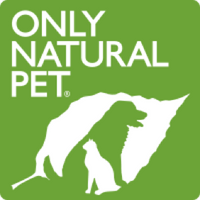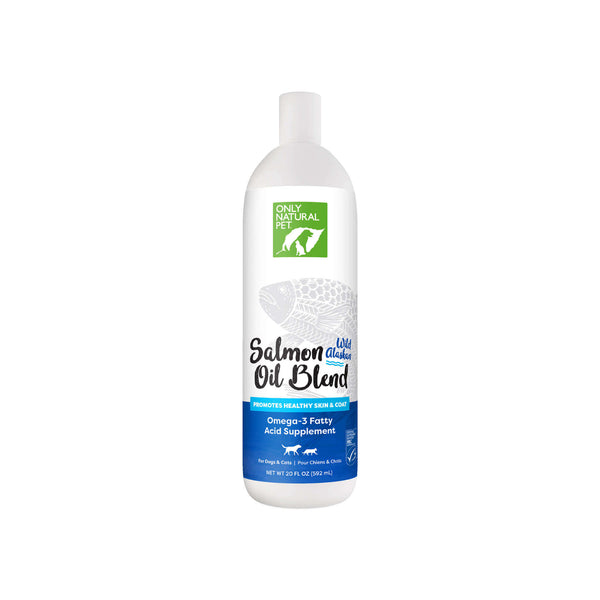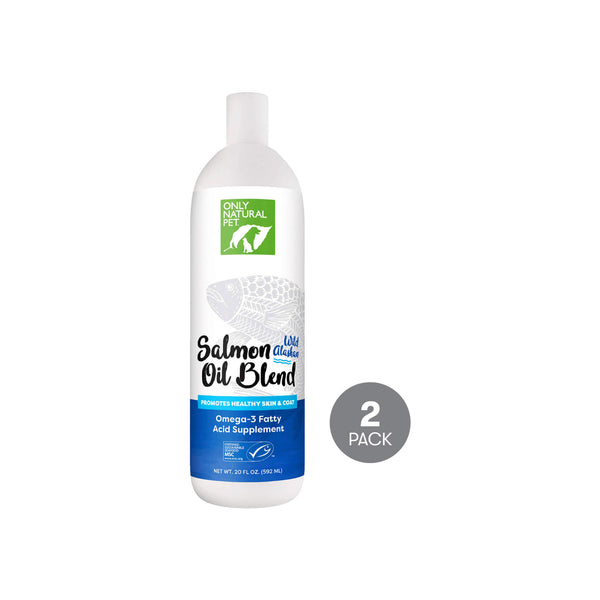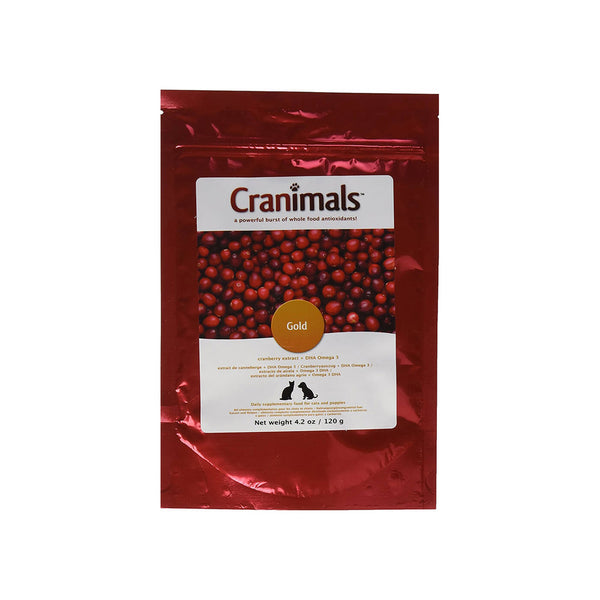The Importance of Essential Fatty Acids for Dogs & Cats
Written by: Richard Rowlands, Pet Health Expert
Often mentioned, almost never fully explained, essential fatty acids, or EFAs, are vital for your pet's health. That’s because they boast an array of benefits including skin and coat health, joint health, eyesight care, and even cognition.
But what exactly are essential fatty acids (EFAs)? What makes them essential? And where can they be found?
In this article, we'll explain it all, starting with what EFAs are and the different types that exist. We'll also take a look at the different sources of EFAs and the role they play in your pet's health.
By the end, you’ll be an expert!
What Are Essential Fatty Acids?
As the name suggests, essential fatty acids are important. In fact, they're essential!
Just like humans, dogs and cats need EFAs to survive. They’re created in the digestive process when the body breaks down fats that are present in food. We can all get the EFAs we need quite easily, providing we’re eating the right things.
That leads to another important point.
Dogs and cats, just like us humans, are not able to make or synthesize EFAs on their own. So, they absolutely must come from their diet. That's why they're called "essential".
What Are the Different Types of Essential Fatty Acids?
There are two categories of essential fatty acids, omega-3 and omega-6. There is also a third not-strictly-essential-but-still-very-beneficial fatty acid, omega-9. The potential health benefits to consuming them are too good to leave this group out.
Omega-3s are polyunsaturated fatty acids. They have many (“poly”) double bonds (unsaturated), which simply describes their makeup. The three most common are eicosapentaenoic acid (EPA), docosahexaenoic acid (DHA), and alpha-linolenic acid (ALA).
EPA and DHA can be found in oily fish and marine algae, while ALA mainly comes from plant sources such as nuts and seeds.
Omega-6 fatty acids are also polyunsaturated. Their molecules are simply built a little differently than omega-3s and they’re more plentiful. Linoleic acid is the most common omega 6. The bodies of dogs and cats can actually convert it into another omega-6 fat, arachidonic acid (AA). Others include gamma-linolenic acid (GLA) and dihomo-gamma-linolenic acid (DGLA).
You’ll find omega-6 EFAs in plant oils, nuts, seeds, and various animal fats. Again, they’re quite abundant.
Omega-9 fatty acids are monounsaturated, so they’re a bit different than omega-3s and 6s. As mentioned, they aren’t strictly essential, because dogs and cats can produce them in their bodies. However, a diet high in omega-9s can lead to good things, which is why we’ve added them to the list.
The most common omega-9 is oleic acid. Great sources for it are vegetable and seed oils, as well as nuts and seeds themselves.
What Are the Health Benefits of Essential Fatty Acids for Dogs & Cats?
Each category of EFAs has some specific and noteworthy health benefits.
These pros show that it’s beneficial to feed a well-rounded diet at all stages, to ensure proper growth, development, and maintenance. From the puppy or kitten stage all the way to your best friend’s senior years, getting the right amount of EFAs is crucial.
Omega-3
One of the big claims to fame for omega-3s is that they help improve the skin and coat health of your furry friend. Their benefits, however, don’t stop there.
Omega-3s may help manage cholesterol, triglyceride, and blood pressure levels, meaning a healthier heart for your pet. Additional research shows that omega-3s can help decrease liver fat as well. And they will support brain and eye development at the fetal stage.
Omega-3s continue to prove their importance, as they’ve been shown to have anti-inflammatory properties and to aid in joint health. They could even improve cognitive function in older pets, making them indispensable for senior dogs and cats.
Omega-6
Much easier to come by for most dogs and cats, omega-6s are in a lot of different ingredients included in most commercially available foods. Nevertheless, they play an important role in your pet’s health.
Omega-6s are key for proper cell growth, immune function, and both skin and coat health. Additional research is also being done on GLA and DGLA regarding their ability to reduce symptoms related to some inflammatory conditions.
The biggest note with omega-6s is they should be balanced with omega-3s. According to various studies, healthy ratios of omega-6s to omega-3s can be anywhere from 1:1 to 4:1.
Omega-9
Like their essential counterparts, omega-9s have important roles to play in your pet’s diet as well.
In some studies, omega-9s have been shown to aid the immune system, which is always good for any pet.
Another study has shown that omega-9s are beneficial in helping to control blood sugar levels by improving insulin sensitivity. That same study also showed that diets high in omega-9s lead to less inflammation in those eating them.
How to Supplement Your Pet's Diet With Essential Fatty Acids
Before changing your pet’s food or adding supplements to their diet, talk to your holistic veterinarian. This will make sure any adjustments you pursue will be the most beneficial to your furry friend.
If your vet does decide that some fixes are in need, there are plenty of ways to do it.
Food
First, your pet’s food is usually a great place to start. High-quality ingredients that include oily fish, such as salmon, will ensure that your dog or cat is on the right track when it comes to their omega-3 EFA intake. Some foods will also indicate their higher EFA content right on the label, so keep an eye out for those. EFAs are not a required nutrient on the guaranteed analysis for pet food labeling according to AAFCO, so not all foods will have this information listed.
When considering a diet high in nutrients for your dog or cat, remember that the less processed, the better. Raw, freeze-dried, and cold-pressed diets are processed with less to no heat, so the EFAs are more present and potent.
Supplements & Toppers
Supplements are another way to introduce EFAs into your pet’s diet. These come in various forms such as fish oil and other food toppers. When considering these, remember that quality matters. Look for wild caught fish ingredients for fish oil EPA & DHA and clean sources of ALA, like those found in hemp seeds.
Treats
A final way to sneak some of those good EFAs into your dog or cat’s diet is through functional treats. This is a great way to feed two birds with one scone, so to speak.
Look for minimally processed options, like freeze-dried or dehydrated, and whole food based, like single ingredient. Remember, fish are naturally high in Omega-3s, so cod skins or salmon cubes are a great option.






























